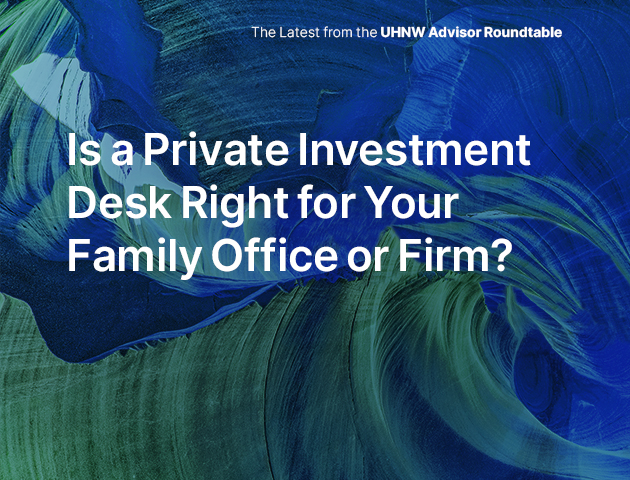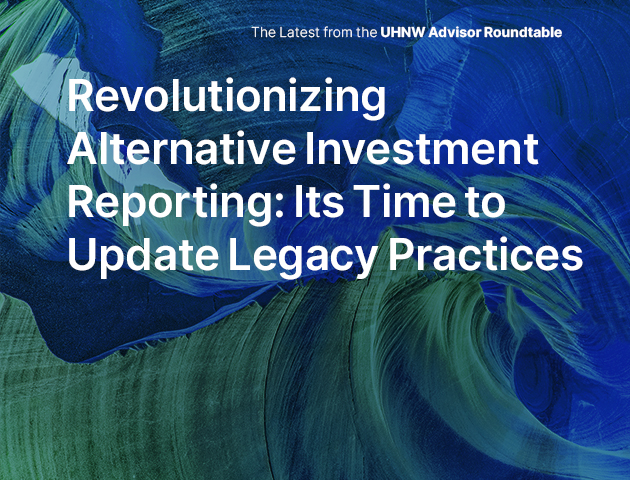Thought Leadership / Commentary / Tax Loss Harvesting for Private Investments
Part 2: The Big Picture
Introduction
In Part 1 of this series, released at the end of 2021, we provided a single piece – though an important piece – of guidance if you were planning on selling/disposing of a private investment at year- end: know if the “Conservative GP Factor” was at play. Simply put, we suggested you ensure that the current value of any such private investment you were planning on exiting (a) is not being valued (too) conservatively and/or (b) is not about to execute a major exit/transaction. Two major reasons, if you recall at year-end valuations were at a relative all-time high as were portfolio company transactions.
For Part 2 of this series, we’re going to take a step back and focus on the big picture and one of the best-in-class management elements for taxable investors with private investment portfolios: Tax-loss harvesting for private investments is a year-round process that must be fully integrated into an overall portfolio strategy and management/execution framework. As there are several key elements in proper private investment portfolio management (i.e., mission, industry focus, deal flow, risk/return targets, etc.), we decided to focus Part 2 on how tax-loss harvesting is/must be integrated with:
Two of the most important tools for managing a private investment portfolio:
- 5-year Cash Flow Projection
- 5-year Portfolio Strategy
What may jump out at you is seeing “5-year” twice: Do you need to be looking out 5 years?
In private investing: YES. YES. Oh, and YES.
Unlike the public equity and bond markets, everything in private investing takes time. From finding the right investment, to due diligence and acquisition, to value creation, to exit, every step can take up to a year, or even multiple years to accomplish. So, investors need to be thinking years ahead, “When will value be created and how long will it take to realize it? What will the markets/situation be then? How do I want the portfolio positioned at that time?”
Before we jump into a real-world example of tax-loss harvesting, it is important to understand that the 5-year cash flow projection and the 5-year portfolio strategy are the table stakes when it comes to best practices. It’s important to clarify what we mean by these two key 5-year tools:
The Must-Have Tools for Private Investment Portfolio Management
5-year Cash Flow Projection:
By each fund and direct investment:
– Capital calls, initial acquisition/investment, and follow-on equity financings.
– Annual income and partial return of capital distributions.
– Exit and sales proceeds, debt recapitalization/refinancing.
5-year Portfolio Strategy:
For the total portfolio, allocation to:
– Type of security/place in the capital structure: Equity, preferred/mezzanine, secured/unsecured debt.
– Lifecycle: Start-up, growth, middle market, large cap.
– Industries, geographies, markets.
Real-World Example
For this real-world situation (simplified for this presentation), we will lay out the situation and then show two outcomes: (1) the Big Picture: using our recommended year-round integrated approach vs. (2) the Stand-Alone: no use of key tools throughout a year-round integrated approach and just tax loss harvesting on a “do it one-off at year-end“ approach.
The Real-World Scenario
- Six years earlier, the two family offices (“FOA” and “FOB”) execute the same strategy of materially overweighting a certain industry sector (“Z Industry”), each FO investing $100 million in funds and directs in the industry. Each FO has several significant and profitable Z Industry exits (in January and February) with 50% of each of their allocations with the same stellar (i.e., 5x MOIC) returns with related material capital gains.
- The remaining 50% of this allocation ($50 million of invested capital) for each FO has not performed. Some investments are currently valued at cost, some below. For this scenario, the remaining Z Industry portfolio/value (“RV”) for each FO is valued at 90% or $45 million.
- Both FOs have the option to invest in a private investment at the beginning of each year. Each opportunity (the “New Opp”) is expected to generate an 18% IRR with a single distribution at the end of Year 5.
Outcome 1: Big Picture FO (FOA)
- With their 5-year Portfolio Strategy perspective, FOA’s current view is that the Z Industry and their investments have a higher risk/lower return profile going forward. In addition, FOA’s current 5-Year Cash Flow Forecast shows the remaining Z Industry investments with 3-, 4-, and even some +5-year delays before distributions. In simple terms, likely little-to-no upside with a long wait for liquidity.
- Even though it’s the beginning of the year, FOA starts a secondary/exit strategy for their Z Industry holdings. As FOA has time to run a thoughtful process, by year-end FOA exits all positions at a 25% discount to their NAV.
- The sale proceeds are $34 million. In addition, FOA has a tax loss benefit of $4 million (the losses on the secondary sales/exits offset the Z Industry gains). FOA invests both ($38 million) in the New Opp at the beginning of Year 2.
- With an 18% return over a four-year period, FOA receives $73 million back at the end of Year 5.
Outcome 2: Stand Alone (FOB)
- With neither a 5-year Cash Flow Projection nor a 5-year Portfolio Strategy, FOB maintains their remaining Z Industry positions for 3 years with no distributions.
- At the end of Year 3, it becomes clear to FOB that value is not being generated and realizations are being/ will be delayed. As it is year-end, FOB runs a rushed sales process and sells its holdings at a 35% discount to NAV.
- The sale proceeds are $29 million. In addition, FOB has a tax loss benefit of $5 million (the losses on the secondary sales/exits offset the Z Industry gains). FOB invests both ($34 million) in the New Opp at the beginning of Year 4.
- With an 18% return over a two-year period, FOB receives $47million back at the end of Year 5.
Comparison : Big Picture vs. Stand Alone
- Integrate with 5-year Tools: FOA’s ability to forecast distribution timing and value creation allowed them to act early. Private investing has the highest return expectation, so time is “always of the essence.” Without the key tools, FOB was “too little, too late” and it cost them dearly.
- Year-round process: By working year-round on their integrated process, FOA was able to negotiate only a 25% discount. The rushed year-end FOB process garnered a 35% discount. With a rushed or the “wrong” process, we have seen much higher discounts. Private asset investors have the potential to benefit more by starting early and being thoughtful and thorough throughout a process.



Big Picture: $73 million vs. $47 million. Big Picture strategy delivers 53% greater value.
Next Step Considerations
When you think about how you run your tax loss harvesting process, first ask yourself the following questions:
- Do we have a clear picture of the private portfolio construction for the years to come?
- Do we have perspective on when current reported values will be distributed?
- Are we always “ahead of the curve” and being thoughtful on every part of our private investment strategy execution?
If you’re comfortable that you have the right answers to these questions, then we encourage:
- Integrating your tax-loss harvesting process into your investment long-term strategy, projections, and cash flow process.
- Making that tax-loss harvesting integration year-round.


 Posted by Mirador
Posted by Mirador





